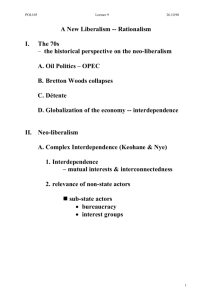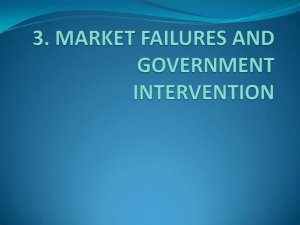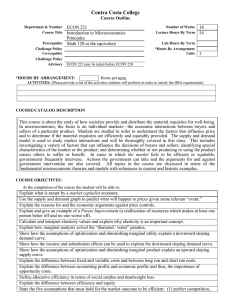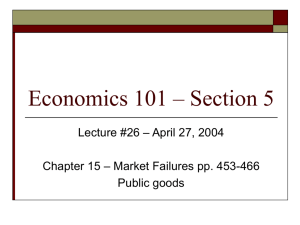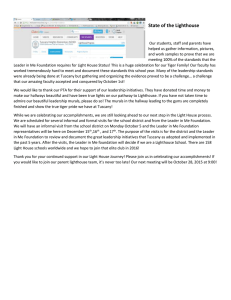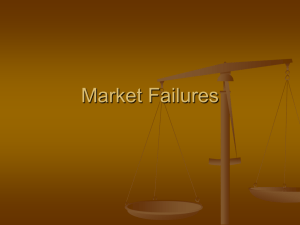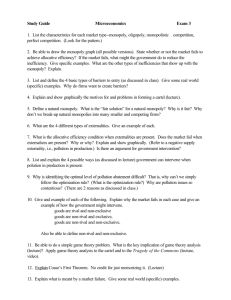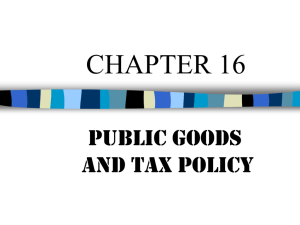Talking Points Presentation
advertisement
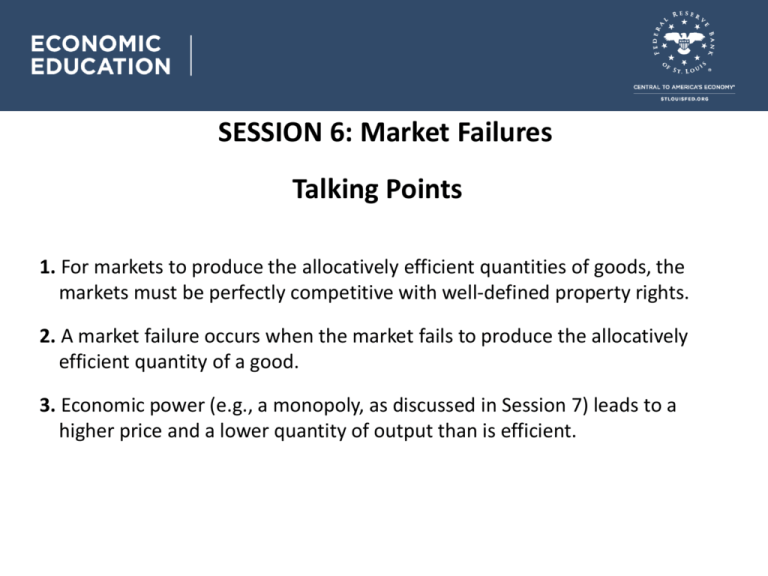
SESSION 6: Market Failures Talking Points 1. For markets to produce the allocatively efficient quantities of goods, the markets must be perfectly competitive with well-defined property rights. 2. A market failure occurs when the market fails to produce the allocatively efficient quantity of a good. 3. Economic power (e.g., a monopoly, as discussed in Session 7) leads to a higher price and a lower quantity of output than is efficient. Session 6: Talking Points, Cont’d 4. Economic power can be addressed by the government through regulation, such as the legal restrictions currently placed on utility companies, or antitrust laws, which attempt to limit collusion and restrict mergers that could significantly reduce competition. 5. Barriers to trade (or entry) lead to inefficiency because resources cannot move to their most-valued uses, resulting in too much output produced in some markets and too little produced in others. (NOTE: This is a principal argument for free trade between countries discussed in Session 15.) 6. Commonly owned or unowned resources tend to be inefficiently used because there is no owner to protect them and monitor that they be used in the most-valued way. This is often referred to as the “tragedy of the commons.” Session 6: Talking Points, Cont’d 7. Governments often take de facto control of common property resources. For example, the Environmental Protection Agency (EPA) makes rules regarding the use of air sheds and waterways, and states control their deer and fish populations through the issuance of hunting and fishing licenses. 8. If property rights are defined for a resource but are not enforced or protected, the resource will be used inefficiently, as if it weren’t owned in the first place. 9. Governments define and enforce property rights through the provision of a legal court system and police services. Session 6: Talking Points, Cont’d 10. Negative (positive) externalities are costs (benefits) generated from the production or consumption of a good that spill over to people other than the market participants, resulting in markets producing too much (too little) of the good. 11. Negative (positive) externalities can be corrected through government taxes/charges (subsidies). 12. Public goods and services are both a. non-rival in consumption (one person’s use or consumption of the good or service does not affect another person’s ability to also consume the good or service) and b. non-excludable (non-payers cannot be excluded from receiving the benefits of the good or service if it is provided). Session 6: Talking Points, Cont’d 13. Examples of public goods include light from a lighthouse, ecological benefits from the Amazon rainforest, levee protection, over-the-air radio/TV broadcasts, and a fireworks display. a. Public goods offer benefits to people whether they pay for them or not. For example, ships benefit from the light provided by a lighthouse whether they pay to use the lighthouse or not. b. Because people are able to benefit from public goods without paying, they have an incentive to be “free riders”—that is, to enjoy the benefits without making any payment. c. Because suppliers are unable to collect payment from free riders to pay for public goods, it isn’t profitable to produce these goods. As a result, markets (i) fail to produce the goods or (ii) produce a quantity that is less than efficient. Session 6: Talking Points, Cont’d 14. Governments often correct for this market failure by providing public goods. Governments provide many goods and services, but only some of them, such as national defense, are public goods as defined by the characteristics above. That is, only some of the goods government provides are non-excludable and non-rival.
